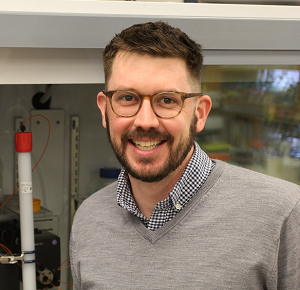RNA Disaggregases as Regulators of RNA Phase-separation in C9orf72 Frontotemporal Dementia
Principal Investigator
Mentors
Project Goals
Frontotemporal dementia is caused by expanded repeats in the C9orf72 gene, which encode toxic repeat RNAs that aggregate, forming RNA foci. I will elucidate the machinery overwhelmed by C9orf72 repeat expansion by testing the hypothesis that DDX3X is an RNA disaggregase capable of dissolving these foci, and by screening for new protein modifiers of C9orf72 RNA foci in live cells. This proposal will reveal basic RNA biology and identify novel therapeutic targets in frontotemporal dementia.
Note: This grant was terminated by the investigator on April 2, 2021, when he left the Perelman School of Medicine at the University of Pennsylvania for an industry position.
Project Summary
We seek to uncover new therapeutic targets in Frontotemporal Dementia (FTD). FTD typically strikes patients later in life and can be caused by toxic repeat RNA originating from genetic expansion of the C9orf72 (C9) gene. What proteins do neurons possess that allow them to stave off the harmful effects of C9 RNA until later in life, and why do they fail?
To answer these questions, we work at the intersection of biology and physics, where we study the aberrant phase-separation and aggregation of neurotoxic RNAs and the proteins they recruit. We endeavor to identify the proteins that prevent or reverse C9 RNA aggregation by employing both biochemistry and high-throughput screens. In our biochemical approach, we test candidates from a class of proteins known as RNA helicases for their ability to alter C9 RNA aggregates. These experiments represent a direct test of specific enzymes divorced from the complexity of the cellular environment. In contrast, our screening approach leverages recent advances in RNA-targeting CRISPR to search the genome for modifiers of C9 RNA aggregation in live cells in an unbiased way. This approach has the potential to uncover totally unexpected modifiers of C9 RNA toxicity that include those that act indirectly on C9 RNA aggregation. Hits from our genetic screen will be followed up with the direct biochemical assays under development in our first aim. Combined, our synthesis of biochemistry and unbiased screening is poised to uncover new genetic modifiers of C9 aggregation while also directly testing their effects in molecular detail. We hope the proteins we uncover, and details of their inner workings we reveal, fuel the development of gene-therapy or small-molecule drugs to treat FTD.
First published on: June 12, 2019
Last modified on: November 23, 2024
